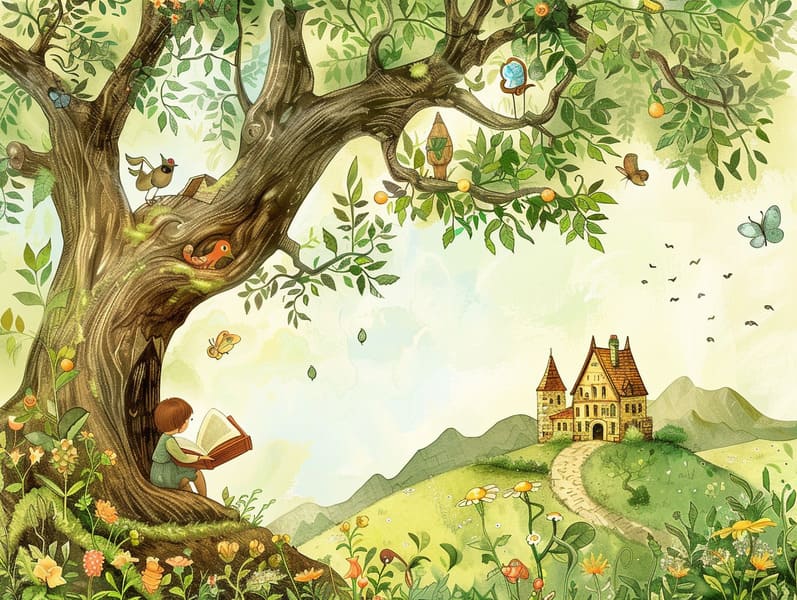A Brief History of Legendary Fairy Tales with Their Undying Elegance.
A Brief History of Legendary Fairy Tales with Their Undying Elegance.
Blog Article

Famous fairy tales have long histories. These narratives have been shared from one generation to the next centuries before they were ever transcribed. They came from a variety of cultures, including Asian traditions. They were initially narrated among adults, often carrying themes and messages pertaining to the societal norms and beliefs of the time.
The renowned Brothers Grimm, Jacob and Wilhelm Grimm, were among the first to collect many of these beloved tales. Their anthology, "Grimm's Children's Stories," included classics like "Cinder Maid," "Little Brother and Little Sister," and "Schneewittchen," which have since become essentials in the world of traditional fairy tales. Similarly, the Danish author's fantastical narratives, such as "The Mermaid's Tale," and "The Duckling's Story," have captivated hearts worldwide, securing their place in the pantheon of timeless fairy tales.
Though they are centuries old, these tales remain as significant as ever, especially as bedtime stories for kids. These whimsical stories are now available in different formats, including colorful picture books, magical animations, and online fairy tales.
Their continued relevance can be connected to several captivating elements:
Important Morals: Traditional fairy tales often present important moral lessons. Fairy tales like "The Boy Who Cried Wolf" teach the virtue of truth, while "The Race of the Tortoise and the Hare" emphasize the merits of perseverance and humility. These tales offer young ones clear distinctions between virtue and vice, building their moral compass in a gentle yet profound way.
Kindness and Comprehension: Timeless fairy tales frequently illustrate personalities facing tests and troubles, encouraging young listeners to identify with their struggles and boost their triumphs. For instance, "The Story of Beauty and the Beast" highlights the importance of looking beyond appearances to comprehend the true being of a soul, promoting tenderness and perception.
Cultural Insights: Many timeless fairy tales are rooted in the cultural contexts from which they blossomed. Exploring these stories can provide illuminating insights into different ways of life, strengthening a sense of world respect and knowledge.
Imagination and Innovation: The supernatural elements in classic fairy tales—mythical entities—revitalize children’s innovations. These narratives guide readers to fantasy realms, activating innovative dreams and a sense of amazement that remains a lifetime.
Classic fairy tales are not only enchanting but also teaching. They provide charming tools in building various mind and heart abilities in children. When traditional fairy tales are spoken, they improve linguistic abilities by teaching new language items and intricate sentence structures. This practice also cultivates listening abilities and focus, as young ones follow this site the story, excited to see what happens next.
Furthermore, contemplating the themes and characters of timeless fairy tales can improve evaluative skills and cognitive skills. Kids are led to see patterns, predict happenings, and make sense of cause and effect. These discussions also further children verbalize their thoughts and feelings, adding to their emotional intelligence.
In today’s information age, the proliferation of online fairy tales has made these fairy tales more obtainable than ever. Web platforms and programs extend ample collections of children's fairy tales that can be read or listened through anytime, anywhere. Fairy tales read out loud are particularly well-received, providing an fun way for young readers to take part in these bewitching tales. Audio stories and read-to-me videos move characters and settings to life, often supplemented by whimsical soundtracks and instrumentals that raise the narrative journey.
The timeless fascination of classic fairy tales lies in their ability to evolve to modern times while maintaining their central values. Contemporary reinterpretations of these tales often incorporate more inclusive figures and modern settings, making them meaningful to today’s audience. However, the essential messages of fortitude, warmth, and integrity remain unchanged, continuing to strike a chord with children of all ages.
Timeless fairy tales also offer a sense of assurance and predictability. They deliver a well-arranged narrative with a apparent beginning, middle, and end, often closing with the wrap-up of conflicts and the triumph of truth over falsehood. This reliability can be placating for children, presenting a sense of assuredness in an inconstant world.
Traditional fairy tales continue to enchant and instruct new generations, maintaining their magic and significance in modern society. As kids' bedtime tales, they put forth a perfect blend of fascination and comprehension, fostering moral values, empathy, and creativity. The proliferation of internet fairy tales and the sought after status of fairy tales told out loud ensure that these old fairy tales remain attainable to new generations.
By safeguarding and narrating these stories, we continue to recognize the rich tapestry of fables and cultural heritage. Whether you are discovering a vibrantly illustrated book, seeing a web-based collection, or listening on an audio story, the allure of traditional fairy tales is always within reach. These narratives demonstrate of the unchanging ability of storytelling and its ability to unify us across epochs and places.
Whether you are exploring a colorful picture book, viewing a cyber collection, or listening via an voice book, the enchantment of Grimm's fairy tales is always within reach.
These fairy tales reveal of the steadfast ability of stories and its ability to connect us across generations and cultures, making a tie that delights and instructs alike.